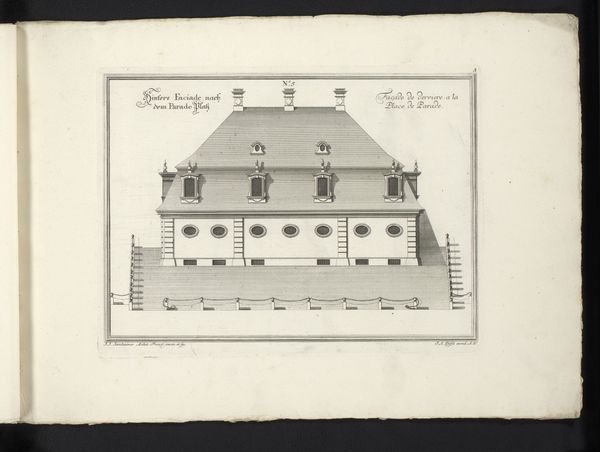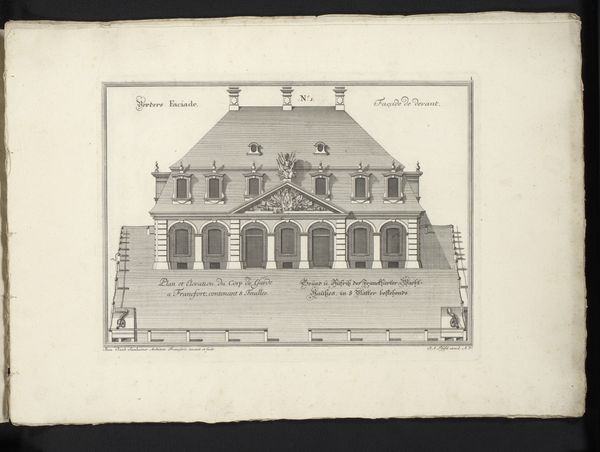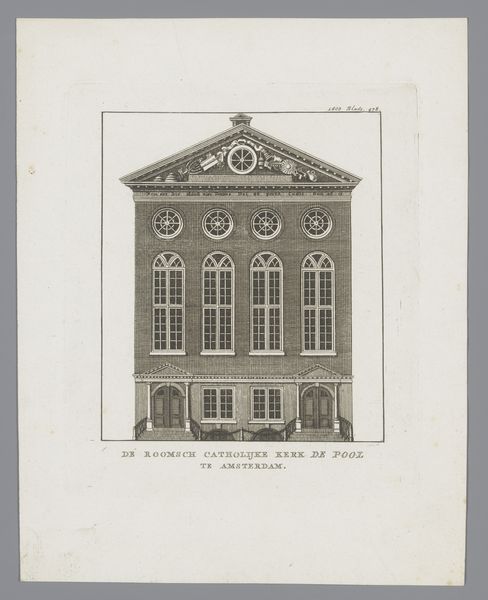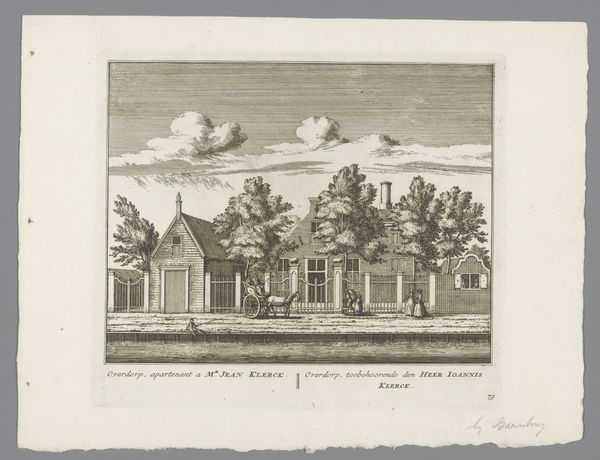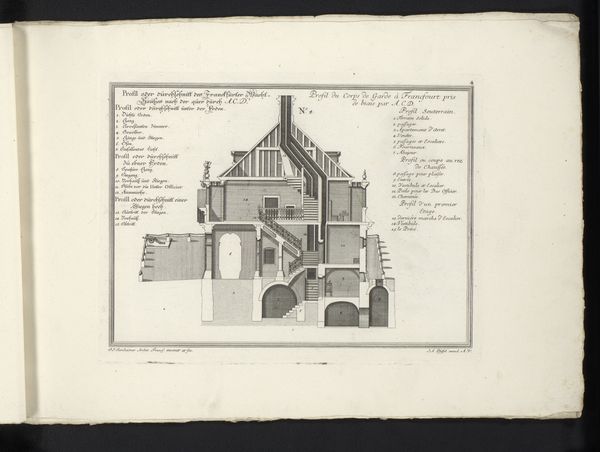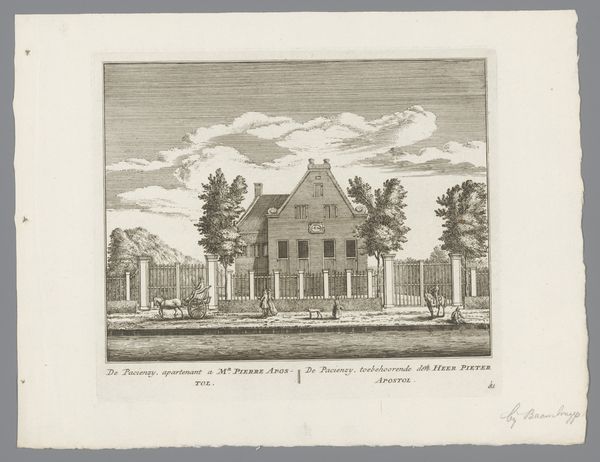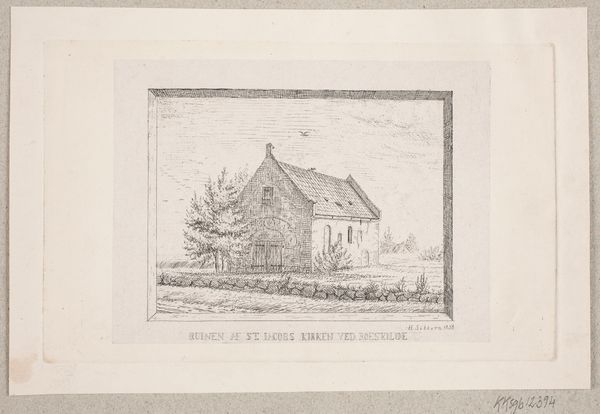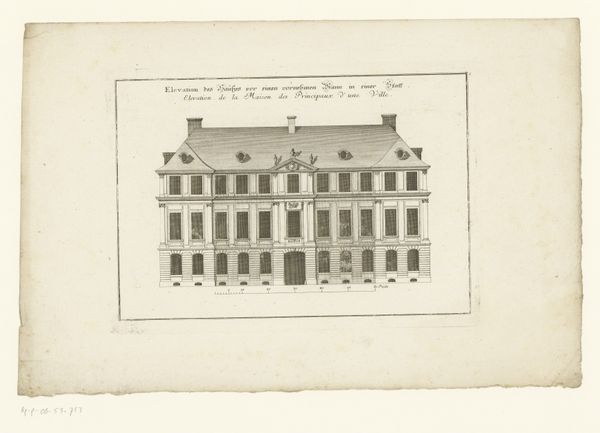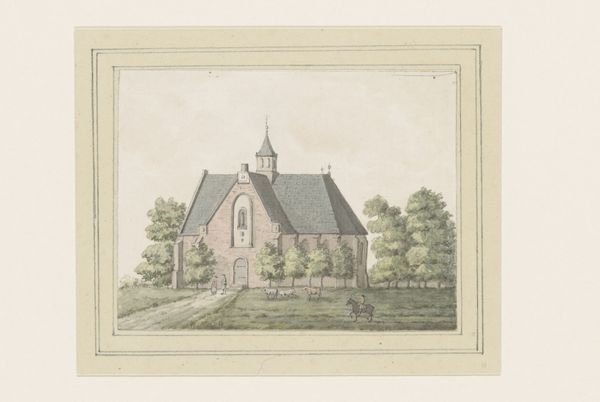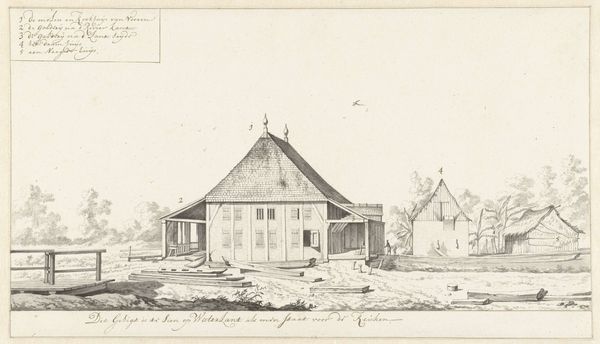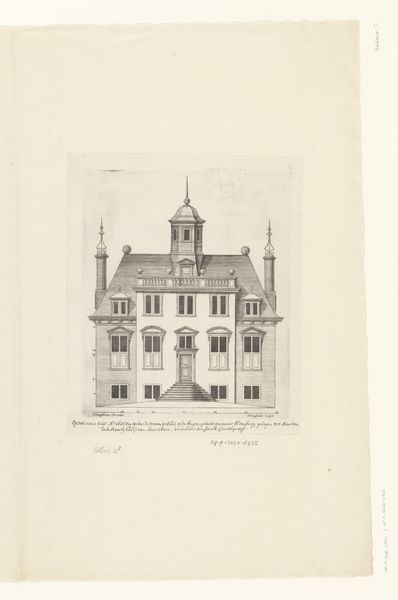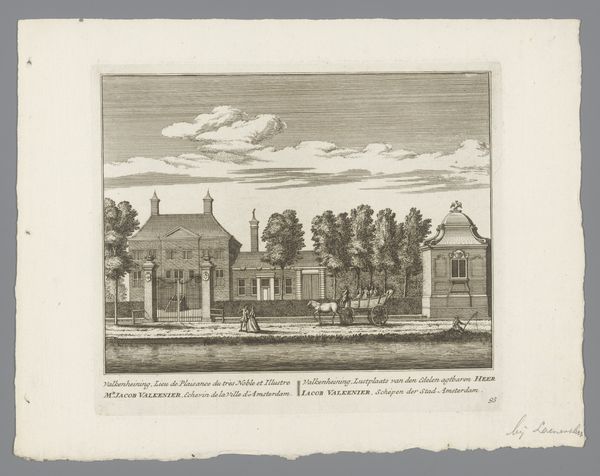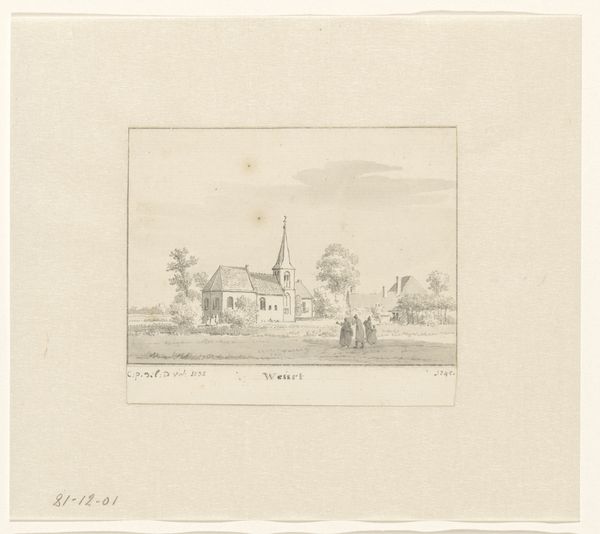
Gezicht op de zijkant van de Hauptwache, te Frankfurt am Main c. 1729 - 1730
0:00
0:00
drawing, paper, engraving, architecture
#
drawing
#
baroque
#
paper
#
cityscape
#
engraving
#
architecture
Dimensions: height 269 mm, width 357 mm
Copyright: Rijks Museum: Open Domain
Curator: Here we have Johann Jakob Samhammer’s “Gezicht op de zijkant van de Hauptwache, te Frankfurt am Main,” a drawing and engraving on paper, dating from around 1729 to 1730. Editor: Oh, wow, it feels so… precise. Almost dreamlike in its starkness, like a stage set waiting for players. I'm getting Wes Anderson vibes, you know? Symmetrical, but something feels slightly off. Curator: Absolutely. The Hauptwache itself was historically a pivotal location, originally serving as the city's militia headquarters. Considering its central role, analyzing depictions of this landmark offers a glimpse into the socio-political dynamics of Frankfurt at the time. The Baroque architecture communicates power and stability. Editor: That makes total sense. And yet, for a building meant to project power, it feels a little vulnerable here, doesn’t it? Like a paper doll house. The details are lovely, but the flatness… it almost defangs it. Curator: It's intriguing how the artistic rendering can reshape the narrative. While the architecture intended to impose, Samhammer’s chosen medium invites us to reconsider how power is visualized and experienced. The choice to present it in profile removes any sense of grandeur. We see it as if looking behind the curtain. Editor: Exactly. I can almost feel the scratch of the artist’s hand as they create the detailed line work and crosshatching. This reminds me that all statements of power are made, are constructed with layers of artistic, or even theatrical touches. Curator: Indeed. This work, when examined alongside Frankfurt's history of trade and political maneuvering, unveils a more nuanced commentary on how civic spaces participate in articulating social order. The building is meant to last centuries, while paper like this is fleeting. Editor: I never considered that perspective! It transforms my experience from something purely aesthetic to deeply critical and reflective. Curator: Well, these visual relics of civic architecture open dialogues on gender, identity, race, and power within urban planning, forcing us to reckon with the legacies of these structures in contemporary society. Editor: Totally. Next time I’m feeling overwhelmed by city structures, I will remind myself that this is also just a theatrical production. It’s nice to bring the colossal down to earth and see it like this small rendering of something grand. Thank you for these insights.
Comments
No comments
Be the first to comment and join the conversation on the ultimate creative platform.
